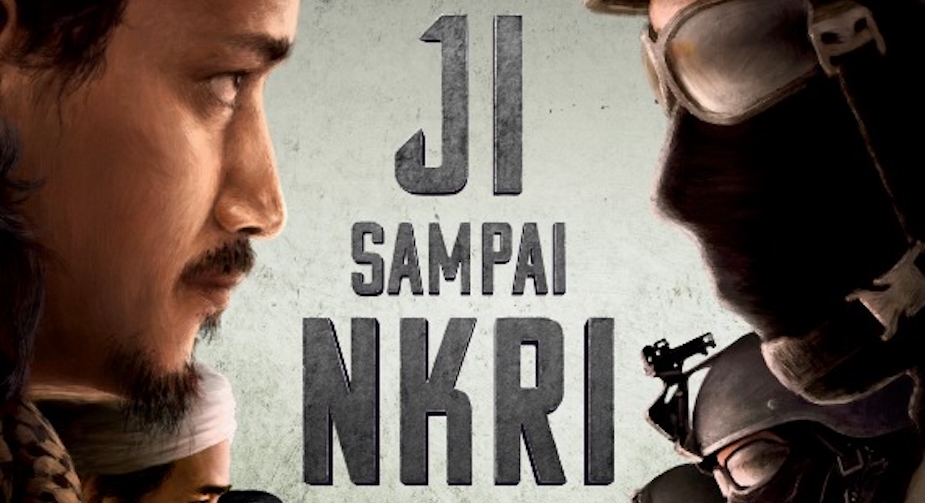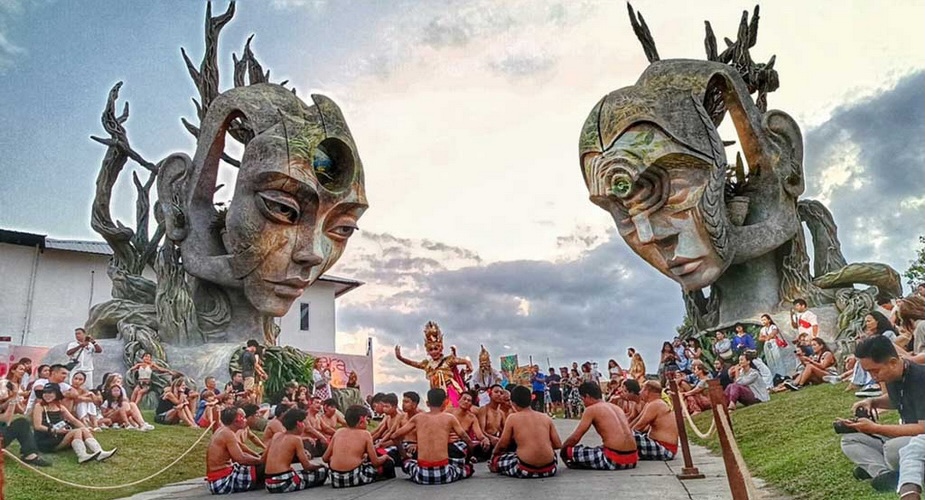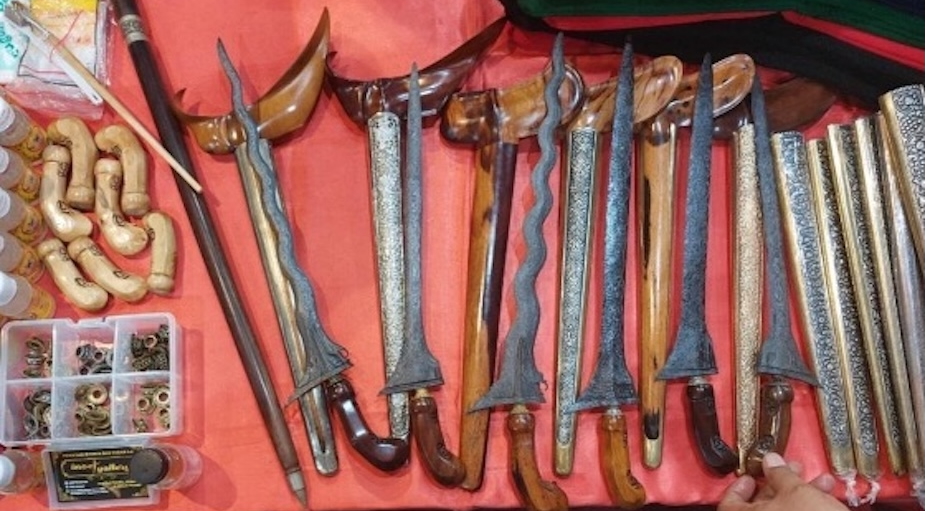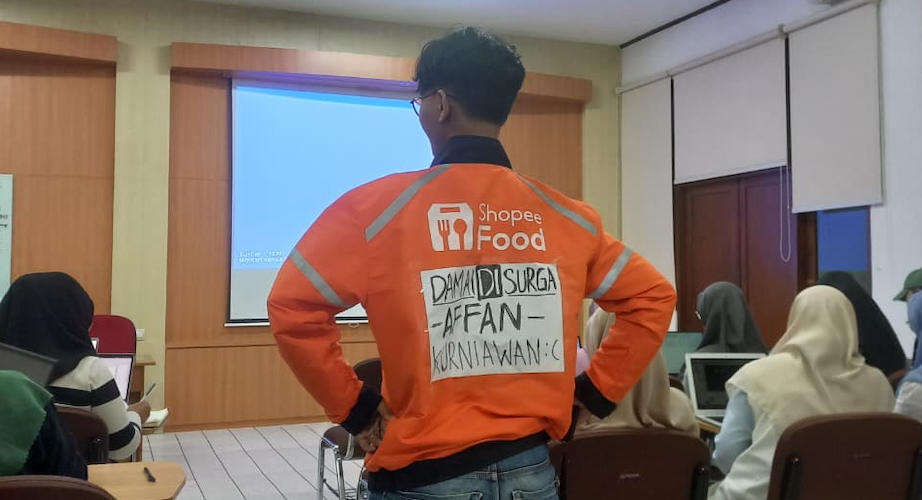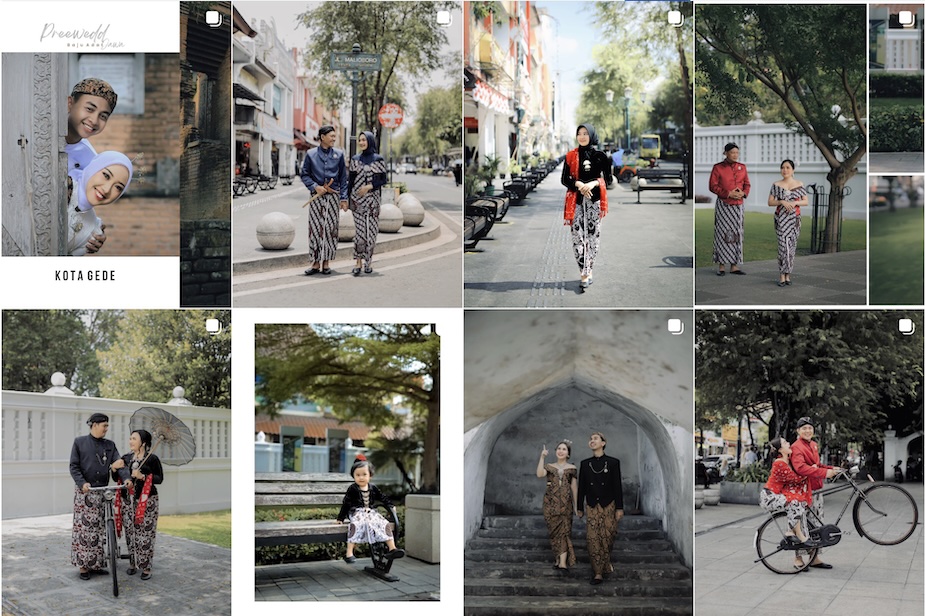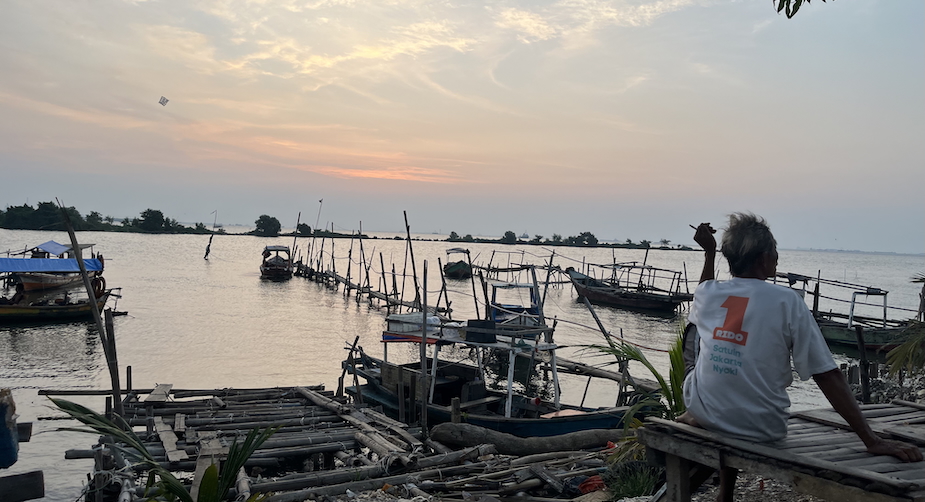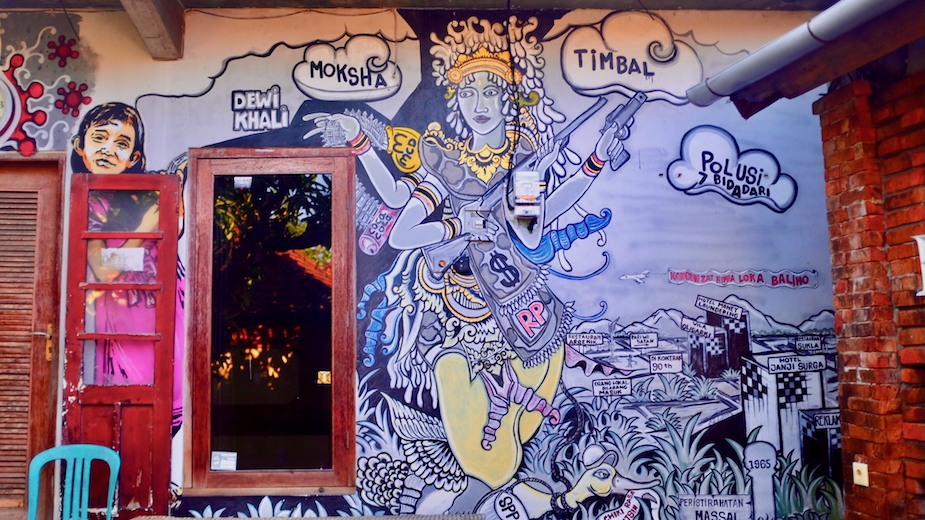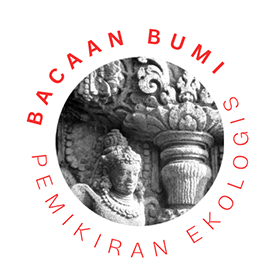Prabowo’s gemoy campaign is the latest example of digital campaigners making a mark on election campaigns
Ross Tapsell
How do we explain victories of neo-strongmen at recent democratic elections? There is no single answer to this question, but one aspect that requires our attention is the changing nature of election campaigning in the face of new technologies. As a country with extremely high rates of social media engagement Indonesia is often at the cutting-edge of digital campaigning. Over the past decade, the role of digital professionals in Indonesia’s election campaigns has grown, whilst the regulatory environment and frameworks they operate have become increasingly opaque.
Prabowo’s professional campaign team – which included both local and foreign companies - created what came to be called his gemoy (Indonesian slang for cute, or adorable) campaign, portraying him as a ‘harmless grandpa’. The strategy included cute cartoon avatars generated by artificial intelligence (AI), cuddly caricatures and carefully choreographed dance moves. As The Economist put it, ‘Prabowo Subianto used to crack heads. Now he busts moves’. To his supporters, Prabowo embraced a positive vision for Indonesia’s future using new and creative images and techniques, avoiding the slander and aggression that had dominated Indonesia’s previous recent presidential campaigns. But Prabowo’s gemoy ‘positivity’ rebrand is problematic because it is part of a wider trend of election campaigning that whitewashes past crimes, negates meaningful debates and criticism, and avoids genuine scrutiny from professional journalists. This professional campaign strategy is being adopted around the world, enabling the success of many neo-authoritarian leaders in democratic elections.
'Toxic positivity'
Put simply, ‘toxic positivity’ considers non-stop positivity as the norm. This means rejecting criticism or resentment of the system and instead promoting messages of ‘unity’ and ‘harmony’. In doing so, it uses new digital cultures and AI to act as a smokescreen to cover-up serious issues affecting the country. This is very different from how many fact-checkers and other NGSs were preparing for AI’s impact in the 2024 elections. They were preparing for an array of ‘deepfakes’ and disinformation. Campaigns like gemoy are not what would be described as textbook definitions of ‘disinformation’. Whilst the content is often obviously AI generated the intent is not to explicitly lie to you. Instead, the goal is to make the candidate likeable and the election campaign fun, but devoid of meaning. It requires money – a lot of it. Plastering cartoon images on posters and massive LCD screens and paying social media influencers doesn’t come cheap. It also includes employing tactics that deny the opportunity to enhance the voters’ knowledge about a candidate, such as avoiding interviews with independent media and sanitising public debates.
Toxic positivity campaigning is not unique to Prabowo nor to Indonesia. It was employed most prominently in the 2022 Philippines election which saw Ferdinand Marcos Jnr, the son of the dictator Ferdinand Marcos, elected as president. Features of it were present in both Kamala Harris’s and Donald Trump’s presidential campaigns in the United States in 2024. Scholars and analysts are currently debating terms to better pinpoint these campaign strategies. Terms like ‘whitewashing’, ‘creative folklore’ and ‘spin dictators’ are commonly used and the US Science Envoy for Artificial Intelligence, Rumman Chowdhury, raised concern about of the growth of ‘softfakes’. In an article published in early 2024, Chowdhury is alert to the use of AI in swaying elections in some of the largest democracies in the world. She writes that ‘we must develop the reflexes to not only spot the altered media, but also to avoid the emotional urge to think that candidates’ softfakes are ‘funny’ or ‘cute’.
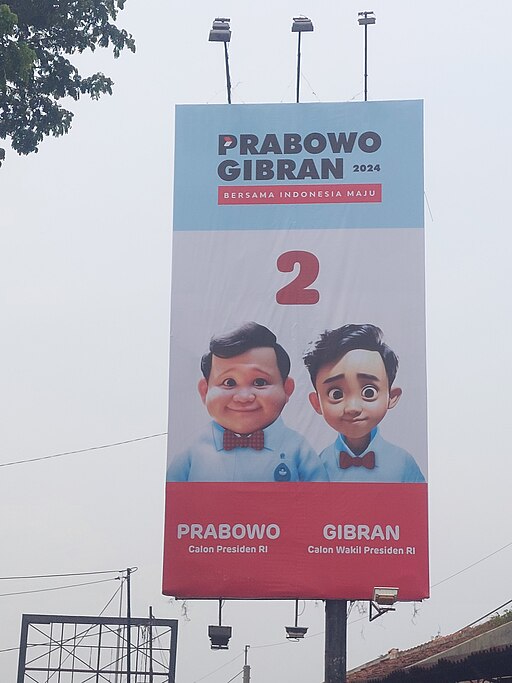
Prabowo’s campaign team believed that Indonesians (especially younger voters) were actively avoiding politics because of growing divisiveness and slander. As one Prabowo campaign official explained early in the campaign: ‘Today’s voters are tired of elections which are based around attacks and accusations. The gemoy and santuy (‘relaxed’) are an oasis for voters who now see that politics can be made cool and happy’. Gone was the fiery, machoistic rabble-rousing Prabowo Subianto, previously described by Edward Aspinall as an ‘oligarchic populist’. In his place was a new Prabowo, who in his campaign speeches would say ‘we must get along, we must unite, we must be peaceful, we must not fight anymore, we must not divide, we must not suspect each other, demonise each other, ridicule each other, slander each other...’.
The TikTok effect
Central to Prabowo’s ‘rebrand’ was the vast amounts of highly professionalised social media content generated and used in his campaign. Social media campaigning has been an increasingly important part of elections in Indonesia for the past decade. In 2024, with its bite-size videos based around trends of dance and music, TikTok – was crucial for disseminating Prabowo’s image shift. Surveys taken one month before the election indicate the importance of the gemoy campaign on TikTok to Prabowo’s popularity. Of the 60 per cent of Indonesians who had heard of the gemoy campaign, over 70 per cent said they ‘liked’ or ‘very much liked’ the message. More Indonesians stated that they use TikTok to receive information about politics, government and society over any other social media platform. Of those who accessed TikTok weekly, over 57 per cent stated they were likely to vote for the Prabowo-Gibran ticket. Of those who accessed TikTok every day, 61.6 per cent said they were likely to vote for Prabowo-Gibran. Comparatively, Indonesians who stated they were likely to vote for Prabowo-Gibran were less likely to be accessing conventional television (48 per cent) and even less likely to be accessing X (formerly Twitter) every day (40 per cent).
But professional content for social media alone is not enough to win an election. The most important factor for a presidential candidate heading into Indonesia’s 2024 elections was the support of incumbent president Joko Widodo (‘Jokowi’). Once Jokowi made the deal for his son Gibran Rakabuming Raka to run as Prabowo’s vice-president his popularity grew exponentially. As the ‘successor’ to a popular leader who praised the incumbent government throughout the campaign the ‘toxic positivity’ strategy was hugely successful for Prabowo. In 2019 when running for President in opposition to the incumbent Jokowi he had described Indonesia as being in a state of crisis in which he was ‘fed up with the antics of the evil elite in Jakarta’. Five years later he enthusiastically committed to ‘continue all the foundations that have been built’, saying ‘we are grateful to President Jokowi Widodo…the Indonesian nation is a great nation’.
For the gemoy campaign Jokowi’s backing meant access to social media infrastructure. Over the past decade under the Jokowi presidency, state management and control over public discourse became commonplace, achieved through social media influencers, ‘buzzers’ (pro-government digital labourers who promote the president and attack his critics) and state crackdown on dissent. Throughout his presidency Jokowi has managed to maintain an extraordinarily high rate of popularity (around 80 per cent) by ‘controlling the narrative’ and ‘winning the internet’. This meant that even when Indonesia was the epicentre of the COVID-19 pandemic and his government was handling the situation with deadly results, Jokowi managed to sustain his popularity. Prabowo has benefited from this existing network, whilst also investing heavily in it from his own campaign coffers. Social media influencers supporting Prabowo promoted his meetings with Jokowi as a way to grow the former’s electability, and certain ‘palace influencers’ were employed to help promote the Prabowo campaign. By the end of the campaign Prabowo was estimated to have spent up to 30 times more cash overall than his rival candidates.
Why is it a problem?
In the era of artificial distortion and professionalised digital campaigning, disinformation has many faces. Prabowo avoided interviews with Indonesian journalists that might expose him to difficult questions about his past or scrutinise his future policies. He gave only one interview with a foreign media outlet during the campaign period, a meek ‘exclusive’ with Al Jazeera just before polling day, published as a Q&A transcript. He was the only candidate who did not respond to a questionnaire from Human Rights Watch on key human rights issues facing people in Indonesia.
Prabowo attended the KPU-approved televised debates (unlike Marcos Jnr who shunned them completely) but presented minimal policy agendas and maintained the ‘positivity’ approach. He regularly complimented his opponents and their ideas. If things became a bit heated, he would break out into his now trademark gemoy dance, drawing laughter from the crowd. Dancing and social media might allow for politicians to distinguish themselves and enhance youth creativity, as Winata and Winarnita explain, but when this aspect of the campaign becomes highly professionalised rather than driven by grassroots creatives, this risk of these issues being ‘buried under the frivolity of TikTok dances and pop music’ is heightened. Indeed, this is their main purpose.
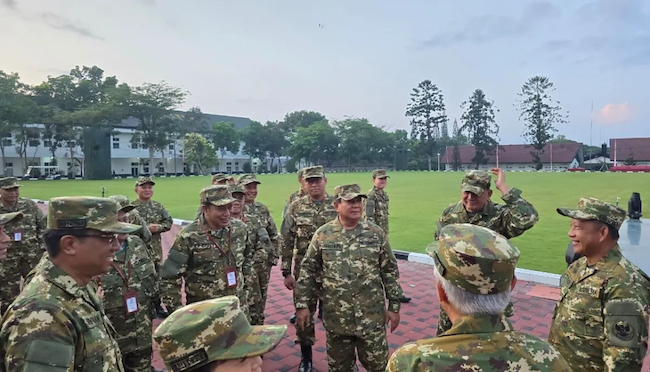
Indonesian civil society was not prepared for Prabowo’s toxic positivity campaign. For example, MAFINDO, a leading ‘anti-hoax’ organisation, states that its primary mission is to ‘create a world of social media and society that is positive [emphasis added] … so that it can strengthen national stability’. How then to criticise the gemoy campaign, if it is promoting ‘positivity’ and ‘national stability’? In the final week of the campaign, some prominent Indonesian activists and scholars produced a two hour-long documentary film entitled ‘Dirty Vote’, which was uploaded to YouTube during the ‘cooling off’ period after the official campaign period. This serious fact-finding analysis of fraudulent election practices was the opposite of the simple, fun TikTok videos the gemoy narrative was producing. Upon its release, ‘Dirty Vote’ was immediately called out by the Prabowo team as being fitnah or ‘slander’. Indonesians have become accustomed to a kampayne hitam (slanderous campaign), usually produced by a candidate campaign team out of desperation in the final days of the campaign. By releasing ‘Dirty Vote’ in the final few days before voting day after the official campaign had ended, the material could easily be dismissed by voters as slander, especially for those who were unwilling to sit through the lengthy, often detailed, explanations.
But the reality is that Prabowo’s character is neither cute nor cuddly, and his gemoy image by no means represents the truth. Following his swearing in to office on 20 October, it did not take long for Prabowo to shed the cuddly grandfather figure and return to his preferences for pseudo-military leadership. At a three-day boot camp at Magelang Military Academy he emphasised the need for ‘discipline’ in his government, with new ministers dressed in military uniforms and saluting on parade.
Lack of transparency
Indonesia’s 2024 elections continue a recent trend where a well-funded campaign utilising new technologies of AI, TikTok and ‘softfakes’ can bring enormous success. At its heart, a toxic positivity campaign reduces the power of ordinary citizens by making election campaigns about who has the most money to produce a slick and highly orchestrated media spectacle. In an era of highly professionalised videos dominating social media feeds, and exponential youth engagement in popular culture, many voters find these campaigns irresistible.
At the same time, professional campaigning is becoming less and less transparent. Fifteen years ago, a candidate’s social media team was made up of a bunch of students with laptops housed in a few rooms, who were described as relawan or volunteers and paid rather poorly. Today enormous amounts of money flow to a wide range of external vendors, from videographers to buzzer teams to AI technologists to influencers to public relations companies. Furthermore, fifteen years ago it was usually not a problem for researchers to enter these so-called social media ‘war rooms’, to sit around with the staffers and watch what they were posting. Most of it was fairly benign. Staffers were proud to state who they were campaigning for and why. Today, the digital campaign industry is shrouded in mystery and often operating in secret, involving national, regional and even global companies. While interviewing campaigners about financial details and the digital labour force was never easy, today just finding the names of digital campaign staffers and their companies is a challenge.
If we only see disinformation as coordinated bots and ‘fake news’ websites the danger is that new forms of information distortion may fly under the radar. Our focus needs to be less on dichotomies of what is ‘fake’ versus ‘true’, and more on traditional approaches to critical communication, such as how information is made, who information works for, and how information becomes knowledge.
Ross Tapsell (ross.tapsell@anu.edu.au) is an Associate Professor and Indonesia specialist at the Australian National University.



